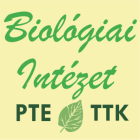hidrobi_4
Credit: CsZ

Lab experiments
In our laboratory experiments, we would like to find answers to questions that cannot be answered by field sampling due to the effects of a large number of unknown, unmeasurable, or randomly changing background parameters, or perhaps because of unpredictable processes in time. To test these types of questions and hypotheses, we created our artificial stream laboratory in our department, which provides controlled conditions and can be combined in many ways (more detail in the ’labs and equipment’ page). So far, we have performed several experiments in the stream laboratory, of which the following would be highlighted here.
Behaviour of the Balkan goldenring (Cordulegaster heros) in a simulated drought
.jpg) Our question was how the probability of survival of larvae during a simulated drought is affected by substrate particle size, size of the larvae, and their digging behavior into the substrate. We found that 15% of the larvae may be able to survive a longer dry period if they dig into the wet substrate, but most of the larvae did not follow this strategy but tried to escape from dry conditions. We plan to investigate this type of behavior in an exciting future experiment.
Our question was how the probability of survival of larvae during a simulated drought is affected by substrate particle size, size of the larvae, and their digging behavior into the substrate. We found that 15% of the larvae may be able to survive a longer dry period if they dig into the wet substrate, but most of the larvae did not follow this strategy but tried to escape from dry conditions. We plan to investigate this type of behavior in an exciting future experiment.
Vector-free upstream dispersal of the non-indigenous, invasive Asian clam (Corbicula fluminea)
.jpg) In this experiment, we addressed the question whether the mussels can move upstream without using any vector in the case of smaller watercourses, where there is no water traffic. The extent of this active spread and the factors influencing it (water velocity, substrate quality, clam density) were examined in this experiment. We found that under laboratory conditions both water velocity, substrate particle size and initial density affected the displacement of clams, but its magnitude is negligible compared to the rate observed in nature, i.e. the role of natural vectors (waterfowl, game, etc.) may be very significant in the spread of the species.
In this experiment, we addressed the question whether the mussels can move upstream without using any vector in the case of smaller watercourses, where there is no water traffic. The extent of this active spread and the factors influencing it (water velocity, substrate quality, clam density) were examined in this experiment. We found that under laboratory conditions both water velocity, substrate particle size and initial density affected the displacement of clams, but its magnitude is negligible compared to the rate observed in nature, i.e. the role of natural vectors (waterfowl, game, etc.) may be very significant in the spread of the species.
Habitat preference of the Aphelocheirus aestivalis in relation to interspecific competition
.jpg) We studied whether the larvae and adult specimens of Aphelocheirus aestivalis have a preferred substrate type / particle size and how this source is shared among different life stages. We cannot yet report final results here, but had a lot of lessons to learn. Further experiments will follow soon these pilots.
We studied whether the larvae and adult specimens of Aphelocheirus aestivalis have a preferred substrate type / particle size and how this source is shared among different life stages. We cannot yet report final results here, but had a lot of lessons to learn. Further experiments will follow soon these pilots.
Drought x Pollution
.jpg) In a two-month series of experiments with Barbora Loskotová and Alena Dostálová of Masaryk University (Brno, Czech Republic), we examined the combined effects of pollution and drying of the streambed on the survival of stream-dwelling macroinvertebrates. Results coming soon!
In a two-month series of experiments with Barbora Loskotová and Alena Dostálová of Masaryk University (Brno, Czech Republic), we examined the combined effects of pollution and drying of the streambed on the survival of stream-dwelling macroinvertebrates. Results coming soon!
Papers about experimental results:
Pernecker, B. – Mauchart, P. – Csabai, Z. 2020: What to do if streams go dry? Behaviour of Balkan Goldenring (Cordulegaster heros, Odonata) larvae in a simulated drought experiment in SW Hungary. – Ecological Entomology 45(6): 1457–1465.
IF= 2.465, SJR= Q1
DOI: 10.1111/een.12931
Pernecker, B. – Czirok, A. – Mauchart, P. – Boda, P. – Móra, A. – Csabai, Z. 2021: No experimental evidence for vector-free, long-range, upstream dispersal of adult Asian clams [Corbicula fluminea (Müller, 1774)] – Biological Invasions 23: 1393-1404.
IF= 3.605, SJR= Q1
DOI: 10.1007/s10530-020-02446-8
Loskotová, B. – Straka, M. – Pernecker, B. – Dostálová, A. – Csabai, Z. – Polášek, M. – Pařil, P. 2023: Combined effect of stream drying and nutrient enrichment on macroinvertebrate community – experimental study from artificial stream mesocosms. – Aquatic Sciences 85: 23
IF: 2.4 (2022), SJR=Q1
DOI: 10.1007/s00027-022-00924-w

.jpg)